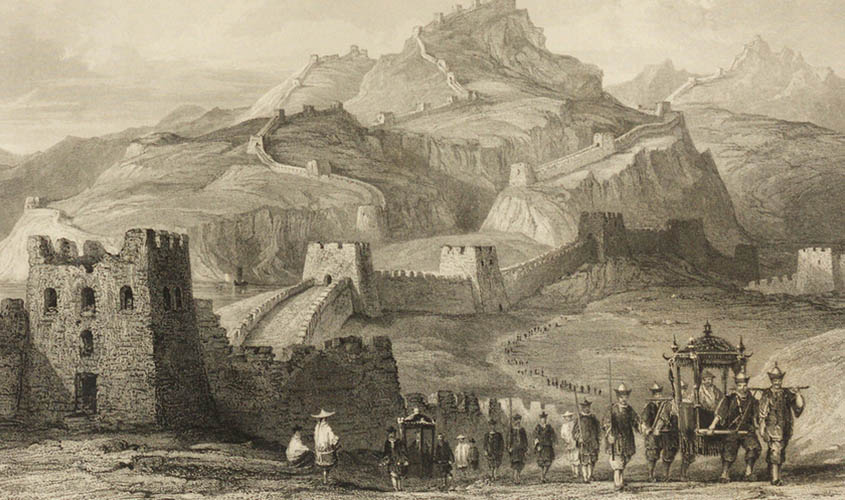The prevailing conditions for the native minority Uyghur community residing inside China’s remote north-western province, Xinjiang, are rabid. The secret transfers of Uyghur detainees to prisons in the Tailai County [in northeast China’s Heilongjiang province] to address the “overflow” in the region’s overcrowded “political re-education camps” [implying and meaning prisons] is being reported widely. Since 1847, the Uyghurs were known to trade one good horse for one piece of pure silk. Their excursions into the uncharted peripheral regions of Eastern Europe, Central Asia, and China, represent a long and dishevelled path. Around 1921, the inhabitants of Xinjiang were not exactly called Uyghurs and were referred to as Turks, Taranchis, Sarts, and Chantous [with the latter specifically used for the Turkic Muslims of Xinjiang].
The discourse of ethnicity in China’s history textbooks for senior high schools, published particularly between 1951 and 1956, exhibited a Han-exclusivist vision and version of Chinese history. In the immediate period following recognition of Communist China in 1949, the representation of non-Han people in Chinese history textbooks belonging to pre-modern Chinese history is noticeable. During the early 1950s, these people were treated as non-Chinese, and referred to as “foreigners”. The textbooks published by the Peoples Education Press (Renmin Jiaoyu chubanshe) in Beijing, held a profound influence on the teaching guidelines, and references for the history teachers, writings of scholars, academics and editors. More importantly, these textbooks were symbolic of China’s mainstream history writing and were the most extensively read and quoted historical texts.
The history textbook of 1951 recorded Chinese history exclusively as that of Han people, referring to non-Han people as foreigners (yizu or waizu). These texts managed to create a clear dichotomy between the Han population (known earlier as Hua) and other ethnic groups that were depicted in an exceptionally damaging and negative light. Non-Han populations were called backward nomads leading a morally inferior and retrograde life. Han people (Hanren) or Chinese people (Zhongguoren) were fungible terms that could be used interchangeably. This primarily implied that China (Zhongguo) and its history and culture were exclusive for the Han—creating an obvious dissimilarity between “us and them”. The 1951 textbook further suggests that China became a unified nation-state of the Han people by the time of the Qin dynasty, which was credited with the establishment of a “mono-ethnic” nation-state (minzu guojia). The subsequent history textbook of 1956, which was the first to be completely published under the new Communist regime, continued to label non-Han people as non-Chinese. What also remained constant was that the most prominent ethnic groups, namely, the Tibetans and the Uyghurs among others, were continued to be treated as “outsiders” in 1956, as such were in 1951.
Putting this marginalisation and subjugation in the contemporary perspective, the United Nations’ Committee on the Elimination of Racial Discrimination (CERD) recently convened to scrutinise whether China is implementing the Convention on the Elimination of All Forms of Racial Discrimination as per the Charter’s guidelines in its 96th session. The CERD expressed grave concern and raised a string of imposingly relevant questions over China’s mass internment of ethnic Uyghurs in order to curb their basic and fundamental religious, cultural freedom and practices.
Confronted by questions including requests for explanations revolving around the legal grounds for the mass detention of millions of Uyghurs, China was asked to provide details on the religious freedom, language use, and cultural and economic rights of the ethnic Uyghurs residing in Xinjiang. The vice-chairperson of CERD, Gay McDougall cited numerous reports stating that almost 1.1 million people have been detained in “political re-education camps”, while another 2.2 million forcibly made to attend “open re-education camps”, whose network spreads across the province. In all, this amounts to nearly 10% of Xinjiang’s total Muslim population. The abuse of “political re-education camps” is widespread. They are fast turning into detention camps for Uyghurs caught in the Chinese clampdown on political dissent, freedoms of expression, association, and movement. It needs to be highlighted here that China’s Criminal Procedure Law (CPL) does not conform to the International Convention Against Torture, which principally means that its police is legally entitled to deny people access to lawyers and legal representatives, paving way for a greater degree of possible persecution and torture.
The cord of political and social repression visible all across China remains intensely pronounced in Xinjiang—a province that resembles more of a military garrison. From when historiographical writing was dominated by Han-exclusive narratives, to now, when the non-Han Uighurs are being subjected to all-pervasive suppression, the despair and relegation of China’s minorities continue.
Dr Monika Chansoria is a Tokyo-based Senior Visiting Fellow at the Japan Institute of International Affairs (JIIA).

